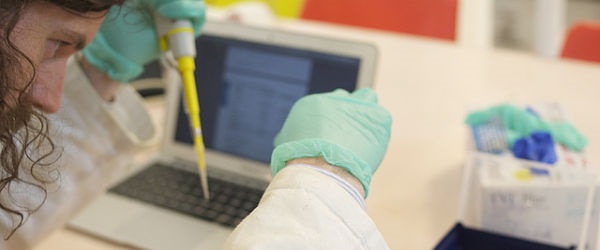Northern and Southern blotting are now a thing of the past. They’ve been replaced with a faster and more quantitative technique. No longer do we wait days to know whether a gene is expressed. We can have the answer in 45 minutes! Real-time PCR is now commonly employed in almost all molecular biology laboratories to quickly answer very specific questions.
But with the widespread use of such a wonderful and sensitive technology comes differences in how results are reported in the literature. There are also differences between reviewers reading these papers and their understanding of the essential information required to judge the accuracy of the reported data.
The MIQE Guidelines
To overcome this increasing problem of lack of consistency in publications, a panel of real-time PCR experts published a set of guidelines. The guidelines contain what they consider the minimal information required when reporting qPCR results. That paper, called The MIQE Guidelines: Minimum Information for Publication of Quantitative Real-Time PCR Experiments, was published in February 2009 in the Journal of Clinical Chemistry.
This paper is not only a great resource for authors, but it also essentially a troubleshooting guide as well. If you don’t have an answer to each of the items on the checklist, then maybe you are missing an essential piece of information in your experiment.
Standardization of Nomenclature
To help standardize the lingo used in real-time PCR, the authors start off by clarifying common terminology.
- For example, the term RT-PCR is reserved for reverse transcription-PCR while the term RT-qPCR should be used for quantitative experiments. The RT in RT-PCR does not stand for “real-time” in this case. The q designates that the experiment is a real-time PCR experiment. So it is qPCR or RT-qPCR when the experiment involves real-time methodology for DNA or RNA, respectively.
- In regards to the use of genes for normalizing qPCR experiments, the authors recommend the use of the term reference genes and not housekeeping genes.
- TaqMan probes are hydrolysis probes, which is in contrast to hybridization probes, a class of probes for FRET and Molecular Beacons. TaqMan is a trade name for hydrolysis probes and is not a scientific term.
- Several terms describe the point at which fluorescence becomes detectable and measurable. These include the threshold cycles (Ct), crossing point (Cp), and take-off point (TOP). The authors explain that these are marketing terms. They propose quantification cycle (Cq) as the universal word for the cycle where fluorescence is measured.
The Checklist
The checklist for the essential and desirable information for a publication is quite long and may be intimidating to researchers who may have not realized how much information is really critical to judging the scientific validity of their work.
But in truth, if you add this information to your paper, it will only help make your conclusions stronger and make it more difficult for reviewers to reject your results. The authors suggest that these topics be addressed for every experiment:
- Detailed experimental design
- The method of RNA or DNA extraction and quantification
- qPCR target information
- Kits/reagents used (e.g. the reverse transcriptase step)
- Efficiency and slope information and
- Data analysis information including NTC information, normalization method, and repeatability
It is truly a great checklist for making sure your paper gives a complete story!
Who Should Read this Paper?
If you use qPCR or RT-qPCR in your project, then read this paper. And if you review papers that employ qPCR, read this paper.
Too many critical details are left out of papers and conclusions are made that may not necessarily be correct. What if someone else’s paper scoops your work because it was not reviewed as critically as yours? And then the data is not even correct?
What if you are trying to repeat someone else’s work and you waste valuable hours and expensive reagents and can’t replicate the results because information was missing?
Ideally, all papers need to be reviewed for the same criteria and with the same scrutiny before being accepted for publication. This type of standardization provided by the MIQE guidelines is meant to ensure fairness during the review process and make sure that only high-quality results make it to print.
What do you think about the MIQE guidelines? Do you like them? Will you follow them? Tell us your thoughts.






